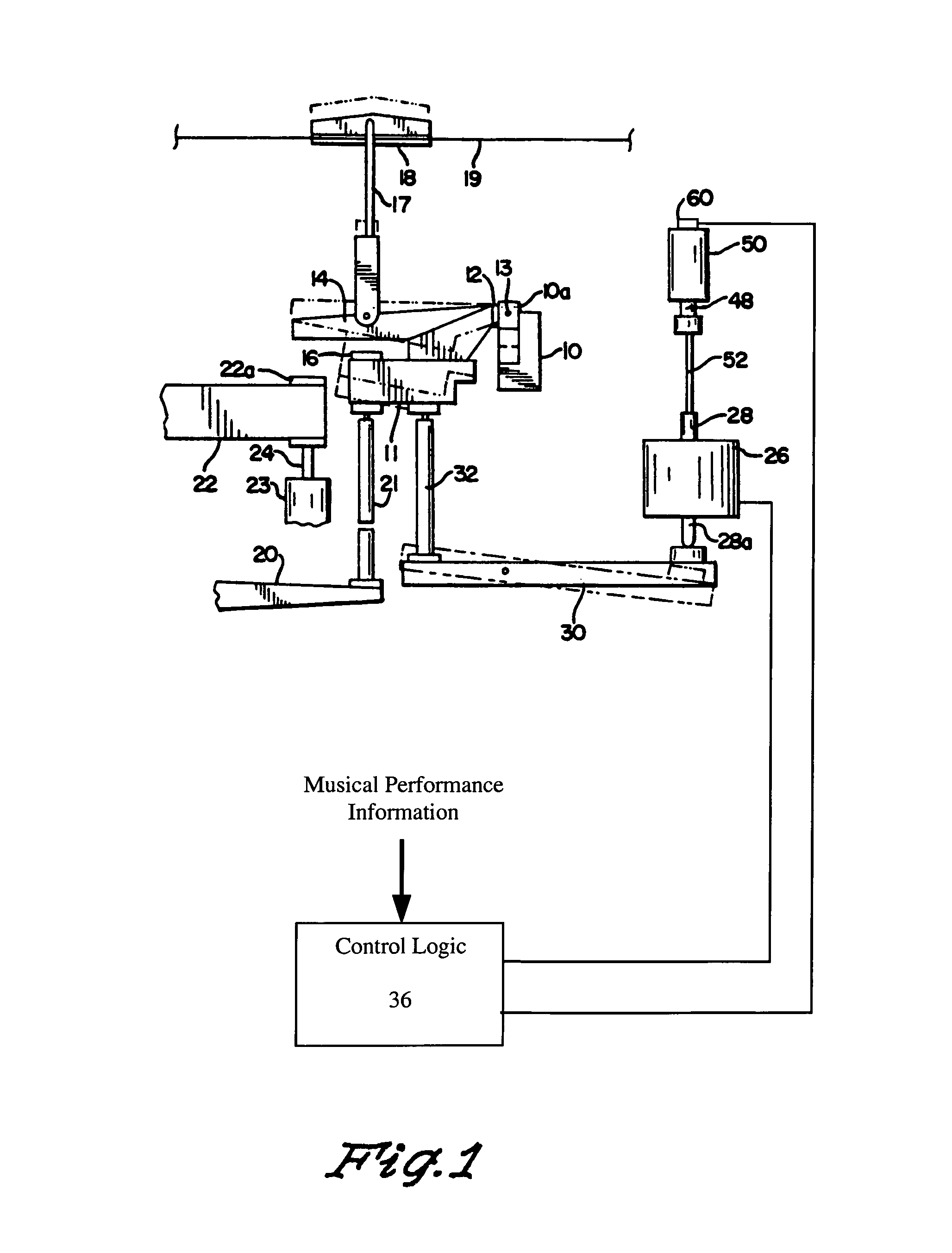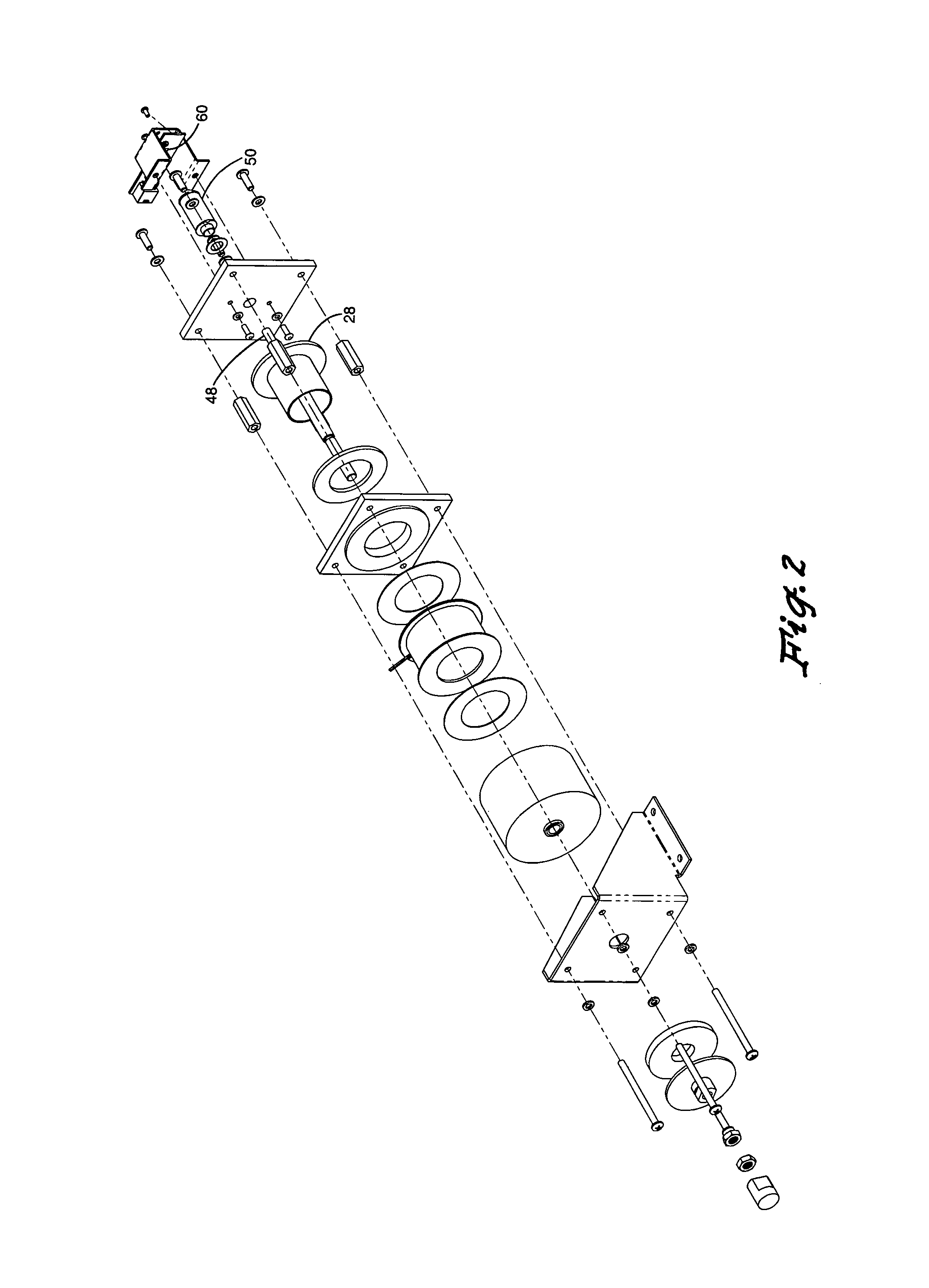Pedal actuator with nonlinear sensor
a nonlinear sensor and actuator technology, applied in the field of mechanically driven musical instruments system and method, can solve the problem that the hall effect sensor cannot be used to directly measure the position of the pedal mechanism, and achieve the effect of directing the position effectively and being simple to install and maintain
- Summary
- Abstract
- Description
- Claims
- Application Information
AI Technical Summary
Benefits of technology
Problems solved by technology
Method used
Image
Examples
Embodiment Construction
[0025]Embodiments of the invention provide systems and methods for driving one or more pedaling assemblies in a piano or other musical instrument. During playback of a musical performance, an actuator effects movement of a pedal mechanism. A sensor, such as a Hall-effect sensor, is used to provide information about the position of the pedal mechanism. The Hall-effect sensor does not directly measure the position of the pedal mechanism. Control logic uses the output of the Hall-effect sensor to calculate a desired drive, which is provided to the actuator.
[0026]Example embodiments will now be described in conjunction with the following figures.
[0027]In FIG. 1, there are illustrated several basic components of the pedal mechanism in a typical piano such as a grand piano. This particular view is a side view. Extending approximately the width of the piano is a fixed rail 10, having a hinge member 10a affixed thereto. In FIG. 1, only one such hinge member 10a is shown, however it will be ...
PUM
 Login to View More
Login to View More Abstract
Description
Claims
Application Information
 Login to View More
Login to View More - R&D
- Intellectual Property
- Life Sciences
- Materials
- Tech Scout
- Unparalleled Data Quality
- Higher Quality Content
- 60% Fewer Hallucinations
Browse by: Latest US Patents, China's latest patents, Technical Efficacy Thesaurus, Application Domain, Technology Topic, Popular Technical Reports.
© 2025 PatSnap. All rights reserved.Legal|Privacy policy|Modern Slavery Act Transparency Statement|Sitemap|About US| Contact US: help@patsnap.com



